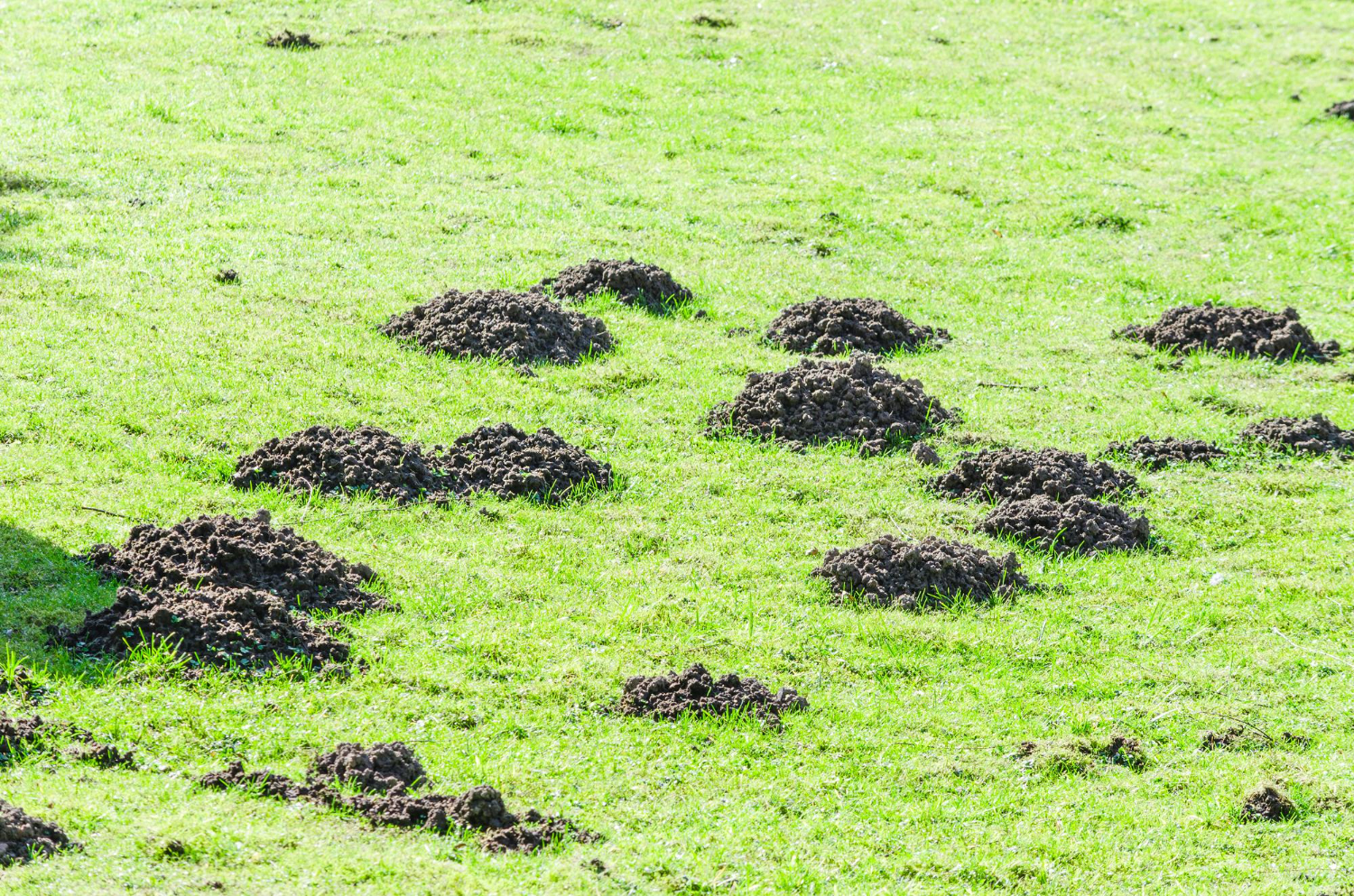
A well-kept business property doesn’t just send a good message to clients. It also keeps maintenance costs lower in the long run. But when moles move in, all that effort can disappear fast. Their burrowing can rip up lawns, tear underground irrigation lines, and damage the visual features that help your business stand out. They can even create uneven paths or hidden soft spots that are unsafe for people walking around.
What may look like a harmless dirt mound could be the start of far-reaching tunnels underground. If left alone, one mole can become a big issue. Don’t wait for more damage to show up. Proactive commercial mole control is how you protect your outdoor areas and keep business running smoothly.
Identifying Mole Activity On Commercial Properties
Big properties give moles more space to hide. You might not see the damage until things start to shift or die off. Moles dig while looking for food like worms, and their path can cut right under lawns, planters, sidewalks, or water lines without much warning.
Here are signs that point to mole activity:
– Soil ridges or raised lines in the turf that feel soft or spongy underfoot
– Loose piles of dirt called molehills around the grounds
– Areas where the ground sinks just slightly near walkways or landscaping
– Grass that looks healthy one day but browns or caves in the next
– Pavers or edging that rise or tilt without clear cause
One hotel noticed soft ground near its pool deck and some yellowing patches on the lawn. It turned out that moles had tunneled through underground sprinklers, causing water to flood certain zones and starve others. Just a few small mounds were the only visible signs at first. The damage to the irrigation system and lawn came later.
Catching these clues early helps avoid bigger problems and gives you the upper hand before more damage gets done.
Selecting Effective Mole Traps For Commercial Properties
Picking the right traps is the next step. You need to match the trap to the type of ground and how the moles are tunneling. Not every trap is suited to all properties, and commercial grounds usually have different soil zones—mulch beds, compact turf, and areas with constant foot or vehicle traffic.
Three common trap types include:
1. Scissor traps – These go directly in a tunnel and snap shut when disturbed. They work best in firm, compacted soil where alignment in the tunnel is easier to get right.
2. Harpoon traps – These stand over a tunnel path and shoot downward when the ground shifts underneath. They’re a good match for fresh surface ridges in open grass.
3. Choker loop traps – These use a tight metal loop to catch moles inside deeper tunnels. They’re often used in dense areas with thick mulch or under shrubs where surface traps may not work.
The best strategy usually involves using different trap types across your property. That’s because moles don’t dig at the same depth or speed across all terrains. Walk your grounds and take notes on:
– The start and end of active tunnel lines
– Where dirt mounds are located and how fresh they look
– What the soil feels like—light and loose, or thick and muddy
– How easy each area is to check and maintain
Sturdier traps hold up better for commercial use. Light-duty traps might break from foot traffic or equipment. Choosing better materials protects your investment and keeps your grounds safer.
Implementing A Commercial Mole Control Plan
Once you’ve chosen the right traps, it’s time to build and follow a step-by-step plan. Haphazard placement won’t help, and it also might ruin your grounds without catching anything. Treat the process like more serious outdoor maintenance—methodical, recorded, and consistent.
Use this approach:
1. Flag All Confirmed Tunnel Lines – Use small flags or paint to mark soft ridges, loose patches, and tunnel entry points.
2. Use the Right Trap in Each Spot – Compare your earlier soil notes with your selection of traps and use what best fits the area.
3. Target Active Tunnels – Fresh tunnels rise quickly and can be soft when you press with a foot. Place traps directly along these points.
4. Mark and Map Trap Spots – Make a quick site map or take photos. Logging locations helps workers avoid damage and makes future checks faster.
5. Check on a Schedule – Don’t set and forget. Daily or every-other-day checks allow for quick action based on mole behavior.
6. Adjust as Needed – If a trap hasn’t triggered after a few days, move it. Moles are always shifting their paths.
Larger commercial properties can benefit from dividing the land into monitored zones. That way, nothing gets overlooked and progress is easier to track. Sticking to a plan helps your team work efficiently and creates fewer surprises over time.
Why Professional Mole Control Makes a Difference
While small businesses might try to handle mole problems with some traps on their own, large commercial sites are a different challenge. Big areas mean more room for moles to hide and more variables that complicate trapping the right way.
That’s where professional mole control services offer true value. A trained crew can bring:
– A solid understanding of mole routines and seasonal activity
– The right traps paired correctly to each soil type
– Experience analyzing tunneling patterns across huge grounds
– Rapid response and real-time strategy changes
– Safer setups that won’t interfere with operations or equipment
Professional teams also understand how to work without creating a scene. If a golf course, apartment complex, or company park is dealing with mole issues, trap placement and check-ins can happen quietly. There’s no need to rope off large areas or create distractions for customers or staff.
For example, one business working with a retirement community had an issue near resident walking paths. A professional team used below-surface traps and shared digital reports with property managers to keep things low-profile, while steadily solving the problem without interrupting daily use.
Getting expert help leaves you free to manage your property without chasing signs underground for weeks.
Keeping Your Grounds Mole-Free Over Time
Removing one mole is rarely the end of the story. Once a property has the food and the soil that moles love, others are likely to show up. That’s why regular mole control and monitoring should become part of your normal grounds upkeep.
To stay ahead:
– Walk your outdoor areas weekly during the peak digging seasons of spring and fall
– Watch for new ridges or soil mounds in zones where activity happened before
– Stay alert for irrigation problems or areas where soil suddenly feels uneven
Spring and fall are the highest times for mole tunneling, so targeted trapping during these months helps cut off problems early. Even when there’s no sign of new moles, having traps ready to deploy is part of staying prepared.
Taking care of your business property year-round means fewer safety hazards and lower landscaping repair costs. With the right effort and support, keeping moles from taking over is completely doable. All it takes is catching the signs early and sticking with a plan that works.
If you’re ready to protect your business property from underground damage and keep your outdoor areas looking their best, Trap Your Moles is here to help. Our team offers trusted solutions for commercial mole control that are designed to minimize disruption and deliver real results. Let us handle the digging so you can focus on what matters most—running your business smoothly.






